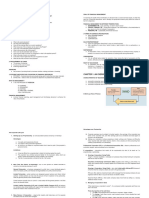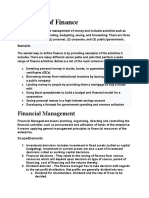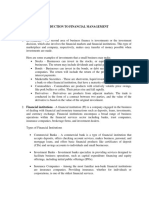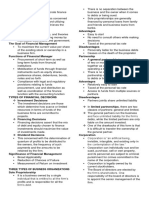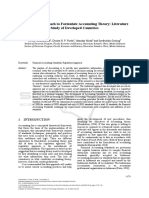0% found this document useful (0 votes)
11 views4 pagesUnit 1 Notes
Corporate finance focuses on maximizing shareholder value through financial decisions, including investment strategies and risk management. Finance managers play a critical role in financial planning, investment decision-making, and managing capital structure. The primary goal of financial management is to enhance business value while ensuring financial health and stability.
Uploaded by
koushik.mbaCopyright
© © All Rights Reserved
We take content rights seriously. If you suspect this is your content, claim it here.
Available Formats
Download as PDF, TXT or read online on Scribd
0% found this document useful (0 votes)
11 views4 pagesUnit 1 Notes
Corporate finance focuses on maximizing shareholder value through financial decisions, including investment strategies and risk management. Finance managers play a critical role in financial planning, investment decision-making, and managing capital structure. The primary goal of financial management is to enhance business value while ensuring financial health and stability.
Uploaded by
koushik.mbaCopyright
© © All Rights Reserved
We take content rights seriously. If you suspect this is your content, claim it here.
Available Formats
Download as PDF, TXT or read online on Scribd
/ 4









